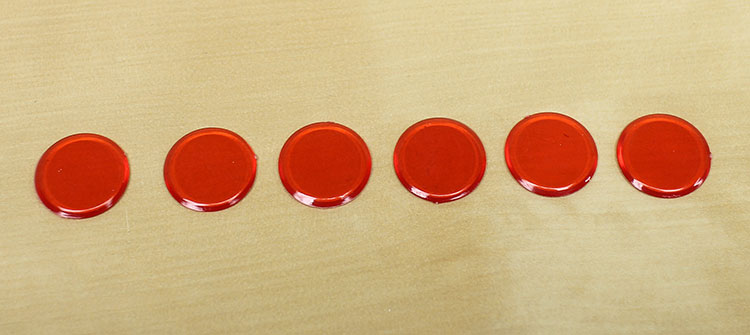C8: Word Count
1. Overview
Count the number of words in a sentence, reinforcing the concept of words and the idea that sentences are made up of words.
“The rain falls on the grass.”
2. Materials
For this activity you will several blocks, checkers, paper squares, or any type of counters, preferably in ONE color. You will also need a list of short sentences made up of one-syllable words. Here are some examples:- Two Words
- – Jim runs.
- – Dogs bark.
- – She laughed.
- – Mom drives.
- – Dad cooks.
- Three Words
- – Mark plays drums.
- – Cats are cute.
- – Toys are fun.
- – Jane ran home.
- – We eat lunch.
- Four Words
- – We played a game.
- – The boys wore caps.
- – It rained a lot.
- – She saw her mom.
- – I like to read.
3. Activity
Video: How to play Word Count
Explain to your child that each counter stands for one word. Say a brief, simple sentence to your child: for example, “Jim runs.” Speak very clearly, being sure to pause after each word. Tell her that she will make a line of counters for the sentence, one counter for each word.
Adult: Each one of these counters stands for one word. I am going to say a sentence two times. The first time I will say “Listen,” and you will listen very carefully. Then I will say “Listen and count,” and you will put down one counter for every word I say.You can then proceed to introduce the sentence. The “Listen” and “Listen and count” commands let her know to focus her attention on what you say next. This will help the activity go smoothly.
Adult: Let’s begin. Listen: Jim runs. Listen and count: Jim runs. [Child should put out two counters.] Adult: Now say it with me as you point to the counter for each word. Child: [with Adult] Jim – runs. Adult: Listen: Mark plays drums. Listen and count: Mark plays drums. [Child should put out three counters.] Adult: Now say it with me as you point to the counter for each word. Child: [with Adult] Mark – plays – drums.Start out with short sentences of just two or three one-syllable words, then gradually increase the length of your sentences. A sentence composed of six or seven one-syllable words is typical for four- or five-year-old children. The purpose of this activity is to focus the child on the idea that sentences are composed of words, not to stretch her rote memory! NOTE: Have your child line up the counters from left to right, to mimic how we read words and sentences from left to right. Teach her to leave a little space between counters, to mimic the space between written words and to keep her from skipping or double-counting as she counts. ↑ Top
4. Confidence Builder
If your child’s performance is inconsistent, use two-word sentences until the concept is understood. Use the lesson script and the listening commands (“Listen.” “Listen and move.”) consistently. ↑ Top5. Extension
Gradually make the sentences more complex: more words, two-syllable words, etc. Move on to sentences that include function words such as short articles and prepositions (a, the, on, for, with, not, etc.). It will be a good challenge for your preschooler to learn that these very short words are words in themselves. ↑ Top6. Variation
Have your child count the words that you say in the first lines of well-known nursery rhymes, such as “Humpty Dumpty.” You can also play this game as you read her a sentence from a familiar story book. ↑ Top7. Small Groups (2-5 children)
Lesson Objective: Using manipulatives as visual aids, children will hear spoken sentences, use a counter to represent each word of the sentence, and count the number of words in the sentence. GELDS (Georgia Early Learning & Development Standards): CLL6.4d Additional Materials:- optional: tray or placemat
Leave a Reply
